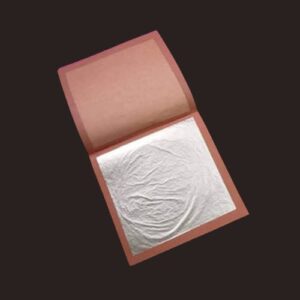
The Japanese samurai sword, a symbol of both artistic mastery and lethal precision, transports us back to ancient Japan, where these blades were more than weapons—they were embodiments of honor, loyalty, and the samurai spirit.
In this exploration, we embark on a journey through time, tracing the origins, understanding the intricate craftsmanship, and unraveling the cultural significance of the Japanese samurai sword.
Origins of the Samurai Sword
1. Ancient Roots in Japan
The roots of the samurai sword trace back to ancient Japan, a land where skilled artisans crafted swords as essential tools for daily life and formidable weapons for warfare. These early blades, known as “chokuto,” set the foundation for the evolution of the iconic katana we recognize today.
2. Influence of Bushido Code
Central to the development of the samurai sword was the Bushido code, a set of ethical principles followed by the samurai. This code, emphasizing virtues like honor, loyalty, and courage, greatly influenced the design and purpose of the sword. It became not just a weapon but a symbol of the samurai’s commitment to these principles.
Anatomy of a Samurai Sword
3. Blade Components
To truly appreciate the craftsmanship, it’s essential to understand the components of a samurai sword. The blade, forged with precision, carries the soul of the sword. The tang, or “nakago,” connects the blade to the hilt, ensuring stability. The hilt, adorned with intricate designs, provides both functionality and aesthetic appeal.
4. Types of Blades
The diversity of samurai swords is evident in their types. The Katana, with its distinctive curved blade, is perhaps the most iconic. The Wakizashi, shorter in length, serves as a companion sword, while the Tanto is a dagger-like blade. Each type has a unique purpose, reflecting the diverse needs of the samurai in feudal Japan.
Crafting the Perfect Sword
5. Traditional Swordsmithing Techniques
The art of crafting a samurai sword is a tradition passed down through generations. Swordsmiths employ time-honored techniques, such as “tatara,” to smelt Tamahagane steel. The meticulous forging and tempering processes result in a blade of exceptional sharpness and resilience, a testament to the skill of the master craftsmen.
6. Materials Used
Tamahagane steel, sourced from iron sand, charcoal, and other natural elements, is the foundation of a samurai sword. The choice of materials, combined with the intricate forging process, determines the sword’s hardness and flexibility. The careful balance achieved in this process contributes to the legendary sharpness of the blade.
Symbolism and Cultural Impact
7. Samurai Sword as a Symbol
Beyond its functionality, the samurai sword holds deep symbolic meaning. It is a symbol of the samurai’s unwavering honor and commitment to duty. The act of unsheathing the sword, known as “Iaido,” is a ceremonial gesture that signifies readiness and respect for the weapon.
8. Influence in Pop Culture
The influence of the samurai sword extends beyond its historical context, permeating modern popular culture. From classic literature to contemporary films, the katana has become an iconic representation of Japanese martial prowess. Its presence in movies and literature immortalizes the legacy of the samurai, captivating audiences worldwide.
Maintaining the Legacy
9. Preservation Techniques
Preserving the longevity and sharpness of a samurai sword requires meticulous care. Traditional techniques involve cleaning, oiling, and storing the sword in a specific manner. Adhering to these preservation methods ensures that the blade remains in optimal condition for generations to come.
10. Modern Replicas
While traditional craftsmanship is irreplaceable, modern artisans strive to replicate the beauty and functionality of authentic samurai swords. Contemporary replicas, crafted with advanced materials and techniques, pay homage to the legacy of the katana, allowing enthusiasts to own a piece of this rich cultural history.
The Allure of Collecting
11. Collectors’ Fascination
Collectors and enthusiasts worldwide are drawn to the allure of samurai swords. Beyond their historical significance, these blades are coveted for their artistic value. Collectors invest not only in the craftsmanship but also in the stories these swords carry, making each piece a tangible link to Japan’s feudal past.
12. Investing in History
The market for authentic samurai swords has evolved into a niche realm of cultural appreciation and investment. Acquiring an authentic piece involves navigating through legal and cultural considerations, but for collectors, the opportunity to own a tangible piece of Japan’s rich history is priceless.
Future of the Samurai Sword
13. Artistic Innovations
In a rapidly changing world, the art of samurai sword crafting continues to evolve. Contemporary artisans experiment with innovative techniques while preserving traditional methods. The fusion of ancient artistry with modern innovation ensures that the legacy of the samurai sword remains vibrant and relevant.
14. Educational Initiatives
Preserving the knowledge of samurai sword crafting is vital for passing on this cultural heritage. Educational initiatives, including workshops and apprenticeships, play a crucial role in ensuring that future generations carry the torch of this ancient craft, perpetuating the legacy of the samurai sword.
you can check latest katana here https://www.truekatana.com/catalog/japanese-samurai-swords/katana
Conclusion
In conclusion, the Japanese samurai sword stands as more than just a historical artifact; it is a living testament to Japan’s rich cultural heritage and the unparalleled craftsmanship of its artisans. As we immerse ourselves in the intricate details of these blades, their legacy persists, echoing the values of the samurai in the modern era.







